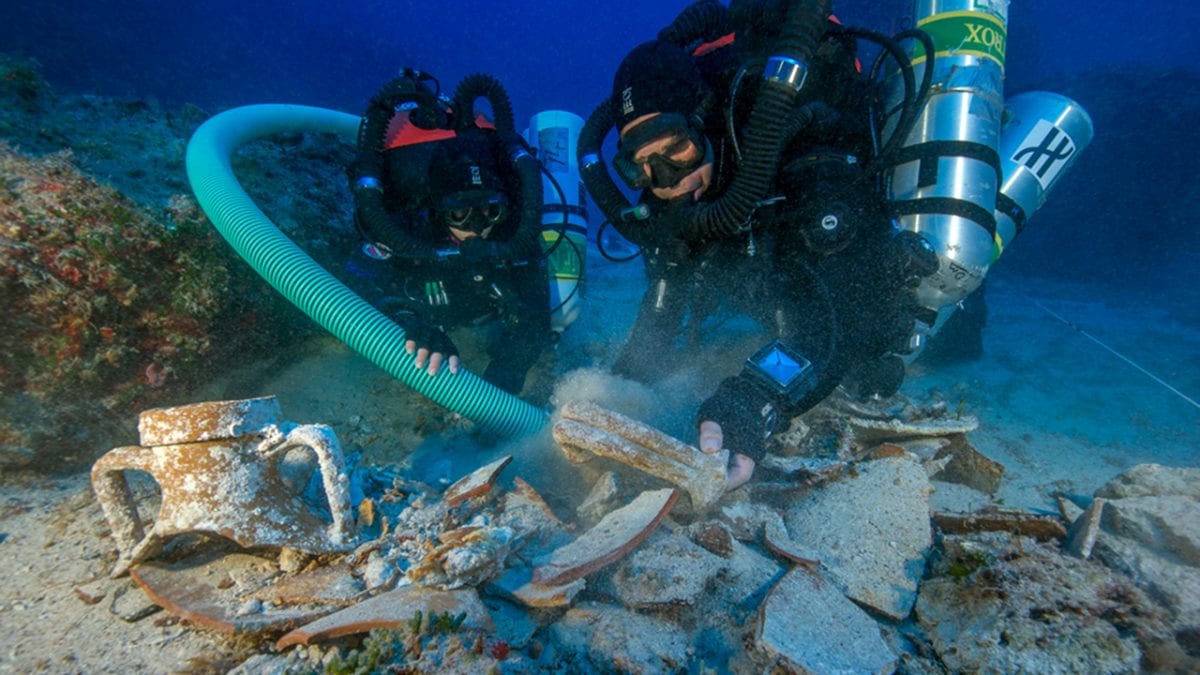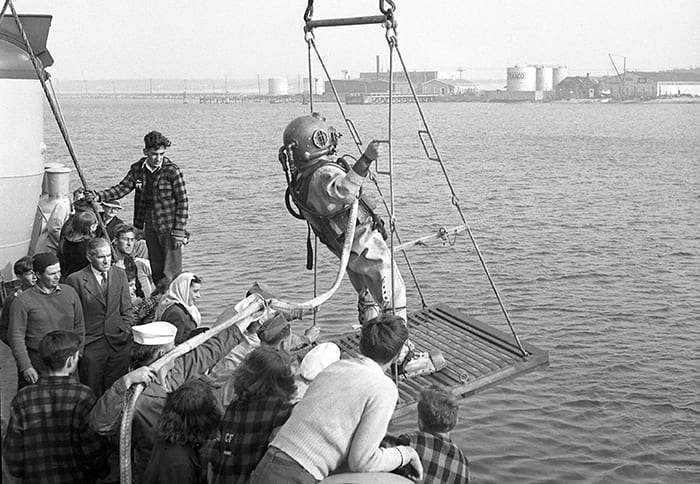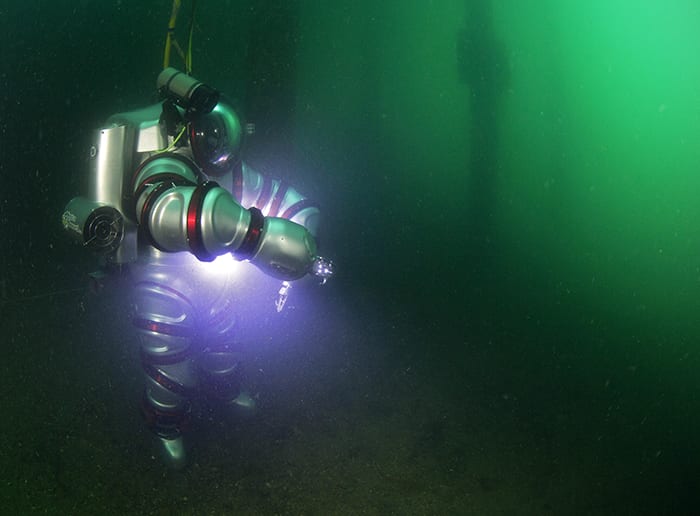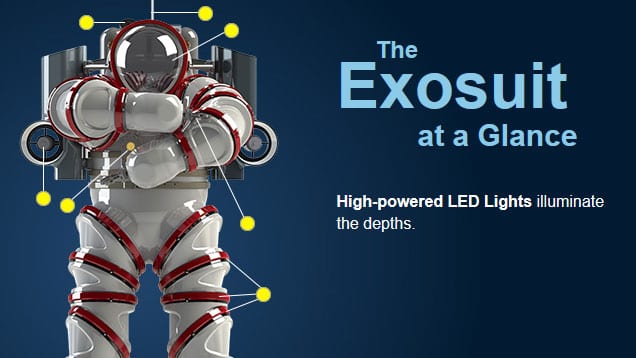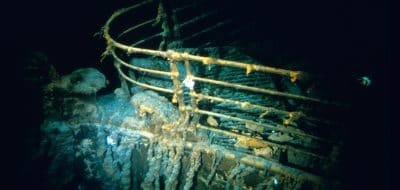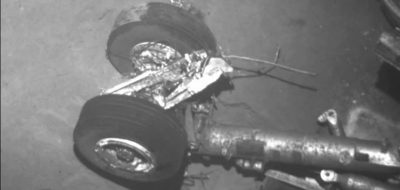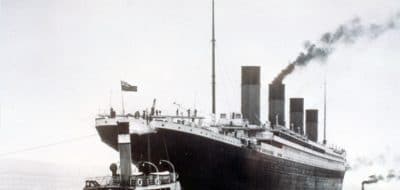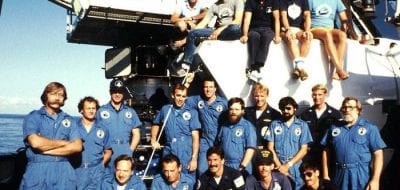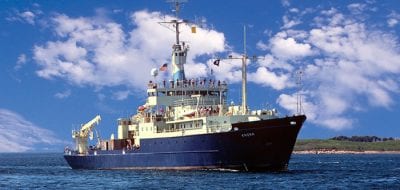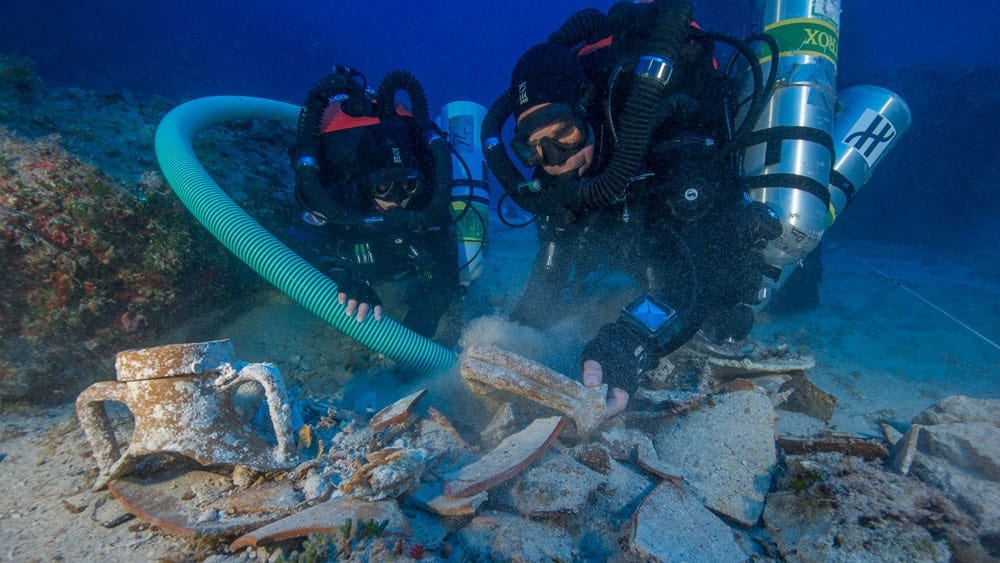
A research team exploring the Antikythera shipwreck in 2012 found several artifacts including this amphora, a ceramic jar used to store and transport goods. (Photo courtesy Brendan Foley, Woods Hole Oceanographic Institution)
What is the Antikythera shipwreck?
The site of the Antikythera Wreck holds the remains of a Greek trading or cargo ship dating from the First Century, BCE. It is located on the east side of the Greek island of Antikythera near Crete at the crossroads of the Aegean and Mediterranean Seas.
The wreck was discovered in the spring of 1900 by a group of Greek sponge divers on their way to Tunisia who took shelter from a storm near the island and decided to look for sponges while they waited for calmer conditions. One of the divers discovered the wreck at depths reported between 40 and 50 meters.
In November of the same year, the captain of the sponge boat informed Greek officials about what they had found and the navy dispatched two ships to support recovery efforts, which lasted until 1902. That excavation revealed a wealth of discoveries that today are housed in Greece's National Archaeological Museum in Athens. These included three life-size marble horses, jewelry, coins, glassware, and hundreds of works of art, including a seven-foot-tall "colossus" statue of Herakles.
More than 70 years later, Jacques Cousteau was invited to explore the wreck. His team recovered hundreds more artifacts plus the remains of four people. His television program "Diving for Roman Plunder" popularized the wreck for a new generation.
The most surprising discovery, however, was an unassuming lump of bronze recovered during the first excavation that was later found to be a complex set of interlocking gears capable of predicting the movement of the sun, moon, and several planets, as well as the timing of solar and lunar eclipses years into the future. The Antikythera Mechanism is believed to be an early computer used to plan important events including religious rituals, the early Olympic games, and agricultural activities.
Why is it important?
The artifacts recovered from the Antikythera Wreck make it one of the most important finds in modern archaeology. The Antikythera Mechanism alone has changed our views of the limits of ancient technology, since it predates anything else approaching its level of sophistication by more than one thousand years.
Despite the wealth and diversity of discoveries at Antikythera, the wreck site has remained largely unexplored, partly because of its location and the shape of the seafloor on which it rests. The wreck is too deep for SCUBA divers, yet too shallow to use a human-occupied submersible or a remotely operated vehicle (ROV), which both require a large ship and deep, open water for safety and maneuverability. The site is also near steep underwater cliffs, and the wreck lies at an angle that makes it hard for an autonomous underwater vehicle (AUV) to survey with sonar.
Working at this site has required the development and use of specialized techniques and equipment that are unprecedented in the field of marine archaeology. In 2012 and again in 2014, a team led by WHOI marine archaeologist Brendan Foley and Theotokis Theodoulou from the Greek Ephorate of Underwater Antiquities applied these tools to the task of surveying and exploring the site and nearby seafloor in the first modern effort to systematically study the Antikythera Wreck.
Because much of the wreck is too deep for conventional SCUBA diving equipment techniques, in the recent efforts to explore the site divers used rebreathers that extend a diver's time on the bottom and greatly reduce the need for decompression stops on the way back to the surface. This increases safety for divers and surface support personnel in an area known for sudden storms, because divers can be recalled to the surface quickly if conditions degrade quickly. During the 2014 trip to survey the site, expedition members are also deploying a pressurized Exosuit, which permits a single occupant work on the seafloor while remaining at sea-surface air pressure.
Advances in underwater survey technology, from AUV control to photo-mosaicking software, are also expanding archaeologists' view of the wreck and nearby seafloor by allowing them to create high-resolution maps of the site. Analyses of these maps suggest that most of the artifacts recovered in the 1970s came from the stern and galley of the ship. The section identified as the ship's hold, which is where the Antikythera Mechanism was found, remains largely unexplored and likely to contain additional significant artifacts. Also,, several large boulders moved by the Greek Navy during the first excavation may actually be large statues similar to the colossus of Herakles featured in the National Museum of Archaeology.
Moreover, a 2012 survey of the seafloor surrounding the site found evidence of a second wreck about 800 feet to the south and revealed an anchor and containers similar to those found on the original ship. In short, the Antikythera Mechanism and other treasures already recovered from the site may be just the beginning of what the Antikythera Wreck can tell us about this important part of human history.

